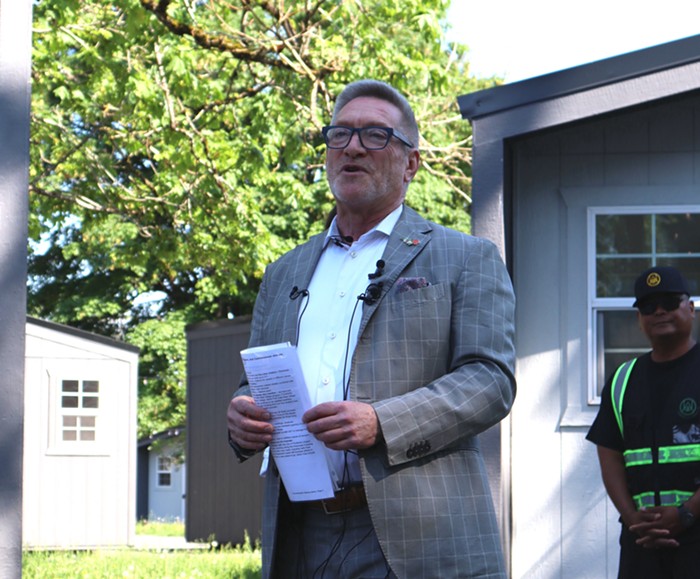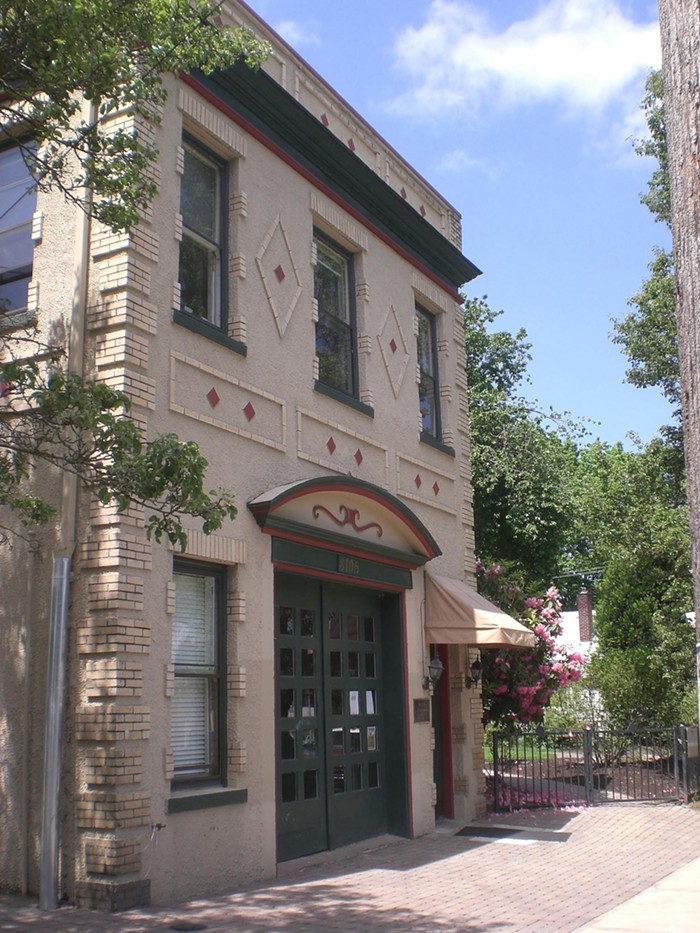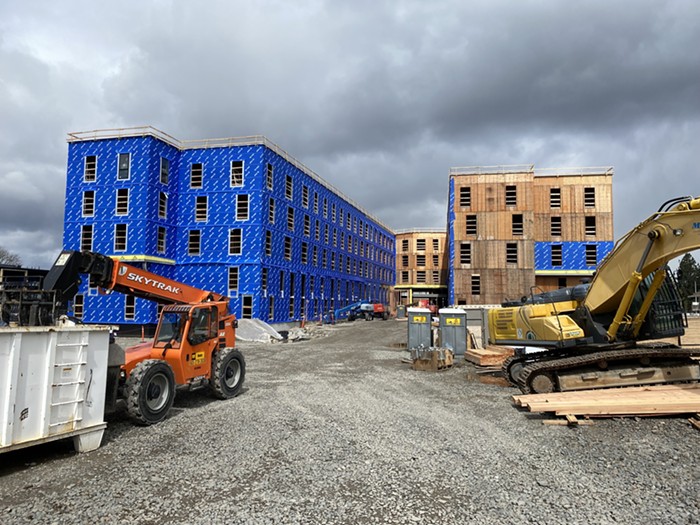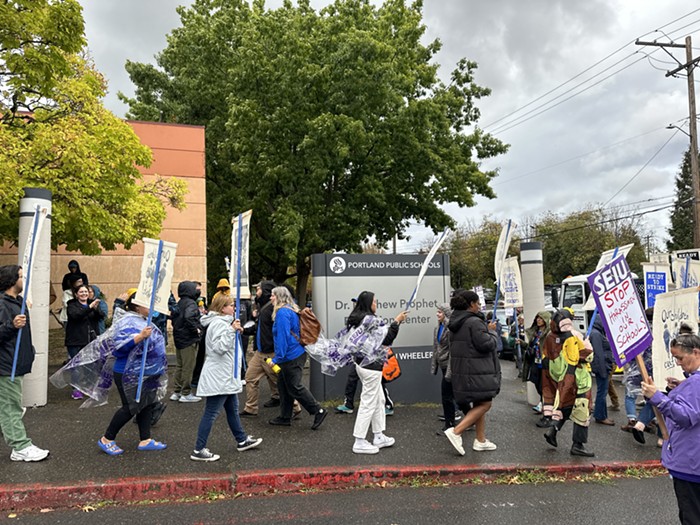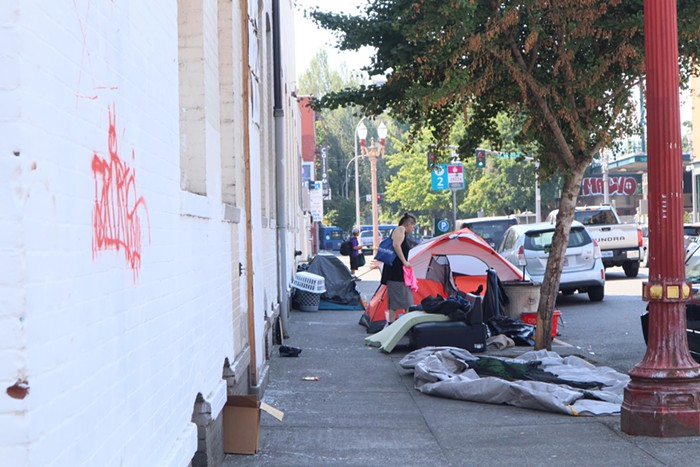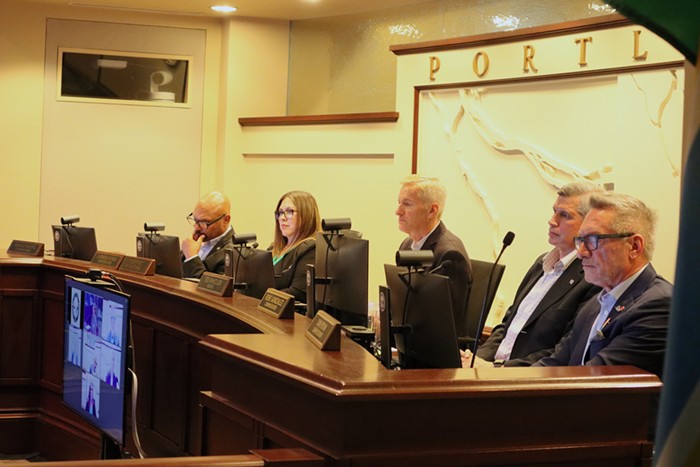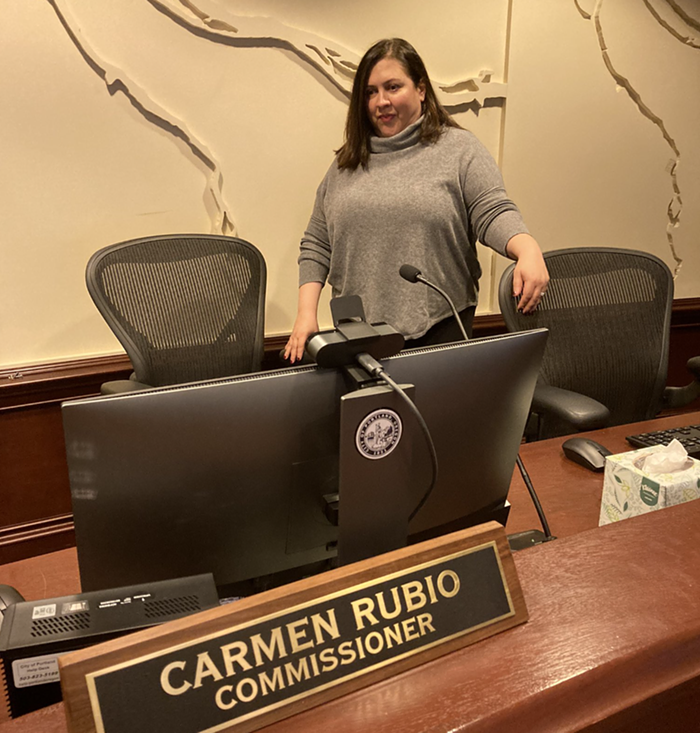IT NEVER FAILS. Any time a so-called downtown "livability" issue appears on Portland City Council's agenda, you can always count on seeing the same few faces—having grimly descended from one of the many new condo towers in Portland's growing core—bringing the same hyperbolic complaints about disease, drugs, and depravity.
A unanimous yes vote last Wednesday, April 20, on whether to extend the Clean and Safe improvement district for 10 more years (and then look later this summer at expanding the district around the Safeway near the South Park Blocks) was no exception.
Residents in the targeted expansion zone suffered through a long council meeting but then spoke, one after the other, in favor of joining the district—willing to pay special fees to bring in neighborhood greeters, litter collectors, and a private security force whose members look and act like cops but really aren't.
Because apparently—shock!—homeless people live downtown. Even worse—ugh!—those homeless people are visible. You might even have to brush past one—yuck!—on your way to fetch the day's organic produce.
We heard much of the same rhetoric during last fall's debate over the downtown alcohol impact area. And then, like now, the gripes got a sweet coating of economic concern—what will the tourists think?—to help public officials swallow them more easily.
But let's call this what it really is: a turf war.
These concerned condo-dwellers, many of them retirees who have downsized after years up in the West Hills or out in the sticks, don't want to coexist with the homeless population. They want them gone and out of sight, even though they ought to have known when they moved downtown that the same elements that drew them into their towers—the area's easy concentration of goods and services—are precisely the same elements that draw in the desperate and less fortunate among us.
Proof of this not-so-secret wish came when Skip Frank, the Clean and Safe board member who represents condo owners, showed the council photographs of homeless people standing legally on sidewalks. (Later it was claimed the photos showed drug dealing, but Frank wasn't aware of that when he spoke.)
He said the photos were taken from a resident's front window and begged for extra security: "This is what he has to look at virtually every day."
Commissioner Amanda Fritz, at least, showed some spine. "What is the perceived problem there?" she asked, sternly.
Frank groped for an answer, but then became alarmingly honest. "The fact that someone with a sidearm shows up and does some gentle nudging," he says, "it's very effective."
The irony is that the council, at the same meeting, also accepted a report on how its nonprofit partners had managed to find homes for dozens of homeless men and women, using a $1 million emergency grant pushed last fall by Mayor Sam Adams and Commissioner Nick Fish. (Fish, to his credit, also stood up to the doomsayers, reminding them that yes, really, Portland has it way better than places like Los Angeles, New York, or San Francisco). But it's hard to know if that compassionate approach resonated with the new downtown dwellers. Brute force, after all, is a bit quicker.
You know: Out of sight, out of mind.
